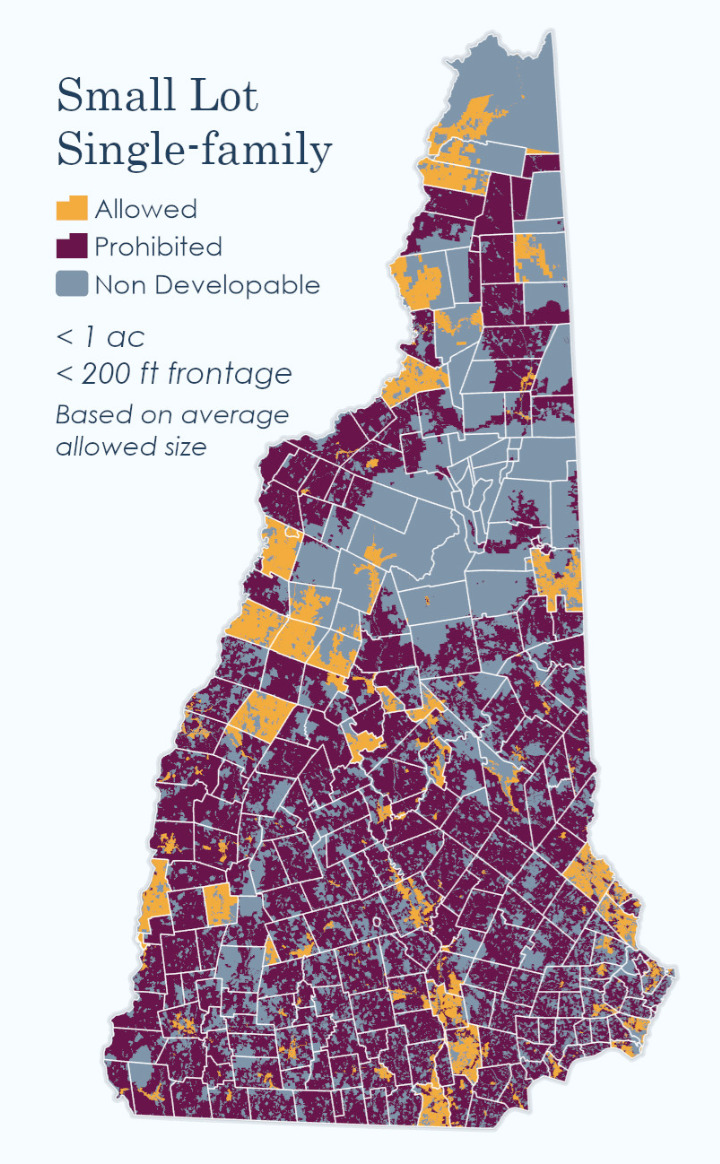Advocacy
Advocates all over the country - housing groups, think tanks, and private individuals alike - have used the National Zoning Atlas to push for change at the state and local levels. Here are some examples showing different ways the Atlas have been used for advocacy.
Advocating for ADUs in Connecticut
In Milford, Connecticut, onerous regulations surrounding accessory dwelling units (ADUs) restricted their occupancy to blood relatives and forbade the collection of rents. Local advocates, including Rachel Merva of All in for Milford, discovered the Connecticut Zoning Atlas when organizing efforts to amend these rules. The group shared images from the atlas to illustrate how Milford's ADU restrictions were harsher than those in surrounding communities, ultimately persuading their local zoning board to relax the restrictions.
“I really can’t underscore enough the importance this zoning map had in the education and decision making process for Milford,” Merva said in an email. “I am incredibly proud, as are all the supporters, that this tool was available and made such an impact!”
Town-specific info sheets for accessory dwelling units developed from by DesegregateCT.
Making Room for “mISSING MIDDLE” Housing in Montana
The Montana-based think tank, Frontier Institute, completed a zoning atlas covering the 13-fastest growing cities as part of an extensive campaign to educate Montanans on the role restrictive zoning plays in constricting the addition of much-needed housing options. Their atlas findings went on to inform a sweeping package of pro-housing zoning reforms passed by the State Legislature in Spring 2023.
"Our Montana Zoning Atlas provides leaders with actionable data about harmful zoning practices that make it difficult—if not outright illegal—to build affordable starter homes like duplexes in Montana cities,” said Kendall Cotton, President & CEO of Frontier Institute. “The Atlas's visual, easy to use data clearly demonstrates to lawmakers that people aren't just getting priced out of Montana cities, they are being zoned out.”
Video component of Frontier Institute’s successful campaign to enact statewide zoning reform.
First-Time homebuyers Speak out in New Hampshire
The New Hampshire Zoning Atlas, coordinated by a team led by the St. Anselm College Center for Ethics in Society, released the first round of New Hampshire zoning data in Spring 2023. After encountering the atlas, New Hampshire native Zoey Lackie submitted an op-ed to a local news outlet relaying how the atlas informed her that restrictive zoning is a factor inhibiting her family from affording a house in their hometown. She advocates for lawmakers to revisit such policies.
“In Dublin there is a four-acre minimum lot size per single family house. As one can imagine, the rate of young families living in Dublin is in steep decline. Many other small towns in New Hampshire have a minimum lot size anywhere from two to five acres,” wrote Lackie in her op-ed. “While I can appreciate the beauty that comes with small town neighborhoods with large yards, I’m increasingly disheartened by the lack of opportunity for other young families.”
Map from the NH Zoning Atlas story map that indicates a majority of the state prohibits the construction of small lot single-family homes.
A Tool for Public Education in Vermont
Staff from the Vermont Department of Housing and Community Development were invited to present at a community lecture series exploring the state's efforts to address housing affordability and availability issues. The presenters showcased the in-process Vermont Zoning Atlas to demonstrate the limited availability of zoning allowing for single-family homes on small lots (lots smaller than one-quarter acre). This visual cue highlighted the prevalence of large lot sizes in Vermont, which the presenters pointed out contributes to “sprawl and car dependency, and creates neighborhoods that are less welcoming for a diverse range of people.”
An Atlas view of North-Western Vermont indicating the lack of single-family zoning allowed on lot sizes smaller than one-quarter of an acre.




